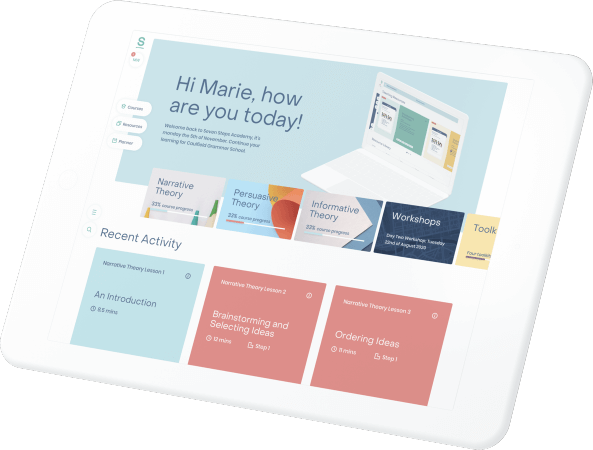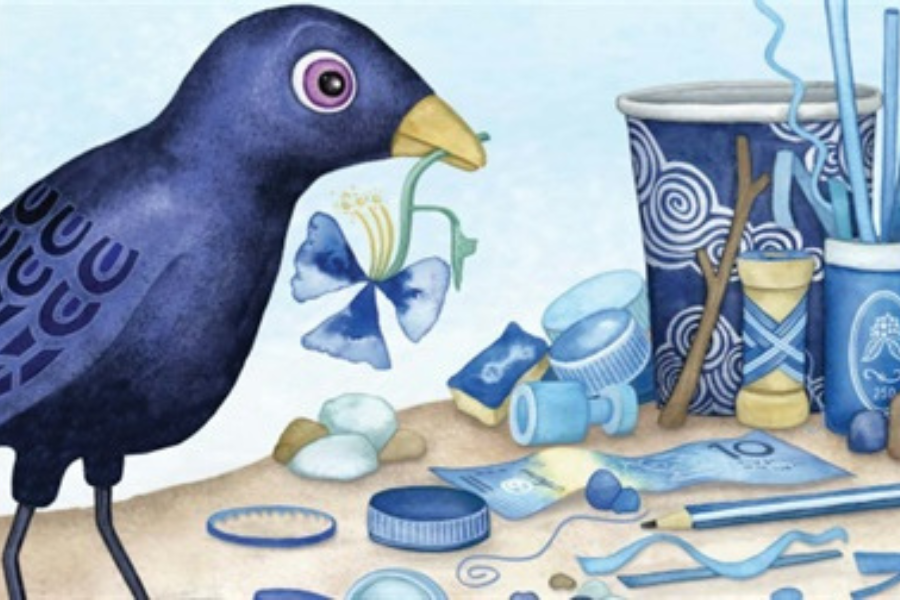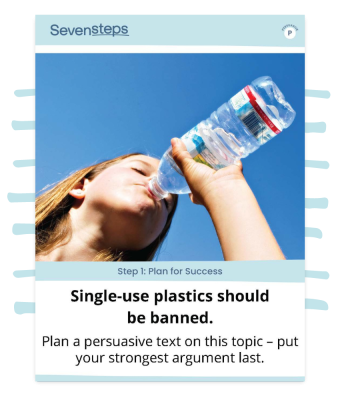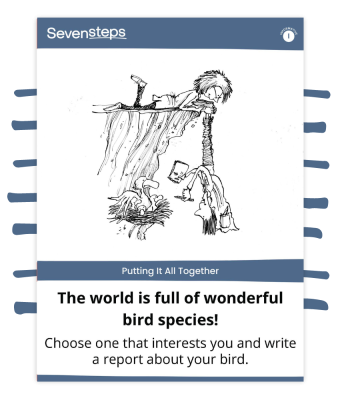No products in the cart.

4 min

Classroom Activities

Rebecca Hill
Have you heard of National Simultaneous Storytime?
It’s an event run by the Australian Library and Information Association to promote the value of reading and literacy. Every year a picture book, written and illustrated by an Australian author and illustrator, is read simultaneously in libraries, schools, childcare centres, bookshops and many other places around the country.
This year, participants will come together on Wednesday 22 May at 12:00 pm AEST to read Bowerbird Blues by Aura Parker.
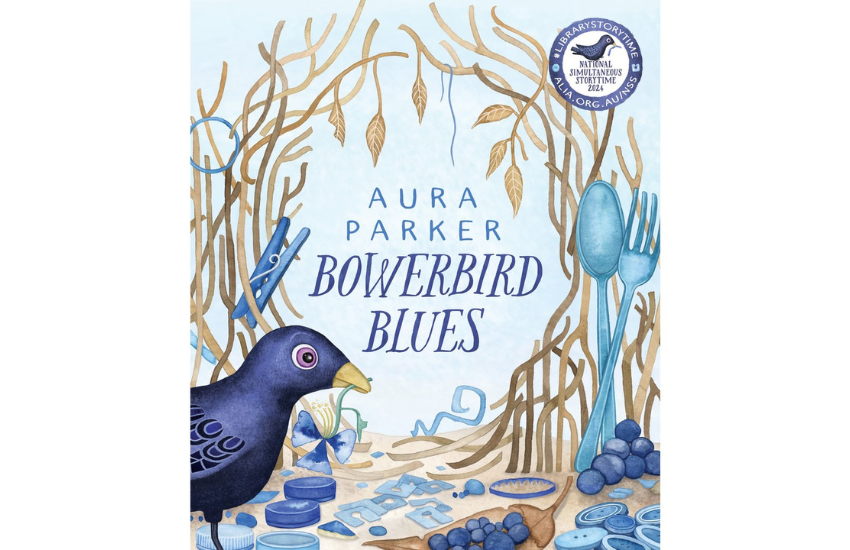
I am a collector. Always looking, finding … and keeping!
Bowerbird loves blue. Magnificent cobalt. Brilliant, vibrant blue! But something is missing. What could it be?

4 writing activities for National Simultaneous Storytime
We’ve curated these Seven Steps resources especially for this year’s National Simultaneous Storytime book. Use them to explore the story with different age groups and ability levels.
1. Bowerbird Blues plotted on the Narrative Story Graph
We’ve plotted Bowerbird Blues on the Narrative Story Graph for you. Use it to demonstrate how this picture book follows the basic narrative structure. Does it have a Sizzling Start and an Exciting Ending?
Challenge students to plot Bowerbird Blues on the blank Narrative Story Graph template and compare it with our version.
Too hard?
Younger students can retell the story by drawing it on the Narrative Story Graph template that doesn’t include the boxes.

Want more story graphs?
Story Graphs – Books about Animals
Story Graphs – Books about Sustainability
You’ll find lots of other story graph collections on Teacher Hub – Log in
Want to become a Seven Steps teacher?
Get started with Sizzling Starts for FREE

2. Writing prompt for beginner writers
This Step 5 narrative writing prompt helps students show rather than tell us what a character is like.
- As a class, discuss talking birds. Ask: ‘Have you ever seen a talking bird? How do you think birds learn to talk?’ Explain that talking birds mimic the sounds they hear around them. Some bowerbirds can imitate dogs barking, sirens wailing and even children playing! Parrots are great mimics of human speech.
- Ask students: ‘If you were a bird that could talk, what sort of things would you say? Would you use your ability to play tricks on people?’ List their ideas on the board under the heading ‘Say’.
- Look at the picture in the writing prompt and ask: ‘What sort of mood do you think this parrot is in?’ List the words students come up with on the board under the heading ‘Feel’.
- Have students walk around the room in a way that reflects the parrot’s personality. They could even say something in a parrot voice. Then ask: ‘What sort of steps did you take? Did you stand tall or crouch low? How did your voice sound?’ Record some words to describe how this parrot behaves on the board under the heading ‘Do’.
- As a class or in small groups, use the ideas you’ve recorded about what this parrot might say, feel and do to write a paragraph that shows rather than tells the reader what this character is like.

3. Writing prompt for intermediate writers
This Step 1 persuasive writing prompt has students plan a persuasive text that argues for or against banning single-use plastics.
Aura Parker cites one of her reasons for writing Bowerbird Blues below:
‘I wrote it for a love of nature, and passion for our fragile environment, as an abundance of plastic pollution is clearly on display.’
- As a class, identify the plastic pollution in the book, such as bread tags, cutlery and straws. All these are single-use plastic products – that is, they are used for a short time and then thrown away. Discuss why this might be harmful to the environment.
- In groups of 3–5, give students 10 minutes to brainstorm as many arguments as they can for or against the topic.
- They then choose their 3 best arguments and write them in dot point form on the Persuasive Writing Graph, ensuring their strongest argument comes last.
- Finally, they can add an idea for a Sizzling Start and an Ending with Impact to their plan.
- Groups share their plans with another group and provide feedback to one another.

4. Writing prompt for advanced writers
This Putting It All Together informative writing prompt challenges students to write an engaging report about a bird of their choice.
In this author note, Aura Parker describes one of her reasons for creating Bowerbird Blues:
‘Australian Satin Bowerbirds are savvy collectors, connoisseurs of colour and careful arrangers of their treasures with intense perfectionist hearts! They create a bower to attract their mate, and an interest in their fascinating behaviour spurred the story along.’
- In groups or individually, students could investigate the fascinating behaviour of the bowerbird for their information report.
- Or they could choose from some of the weird and wonderful birds on the BirdLife International website.
- Encourage students to use the Informative Writing Graph to plan their report before they start writing.
- Students present their reports as a brochure or PowerPoint.

We have lots more free visual writing prompts here:
Narrative Writing Prompts | Informative Writing Prompts | Persuasive Writing Prompts



